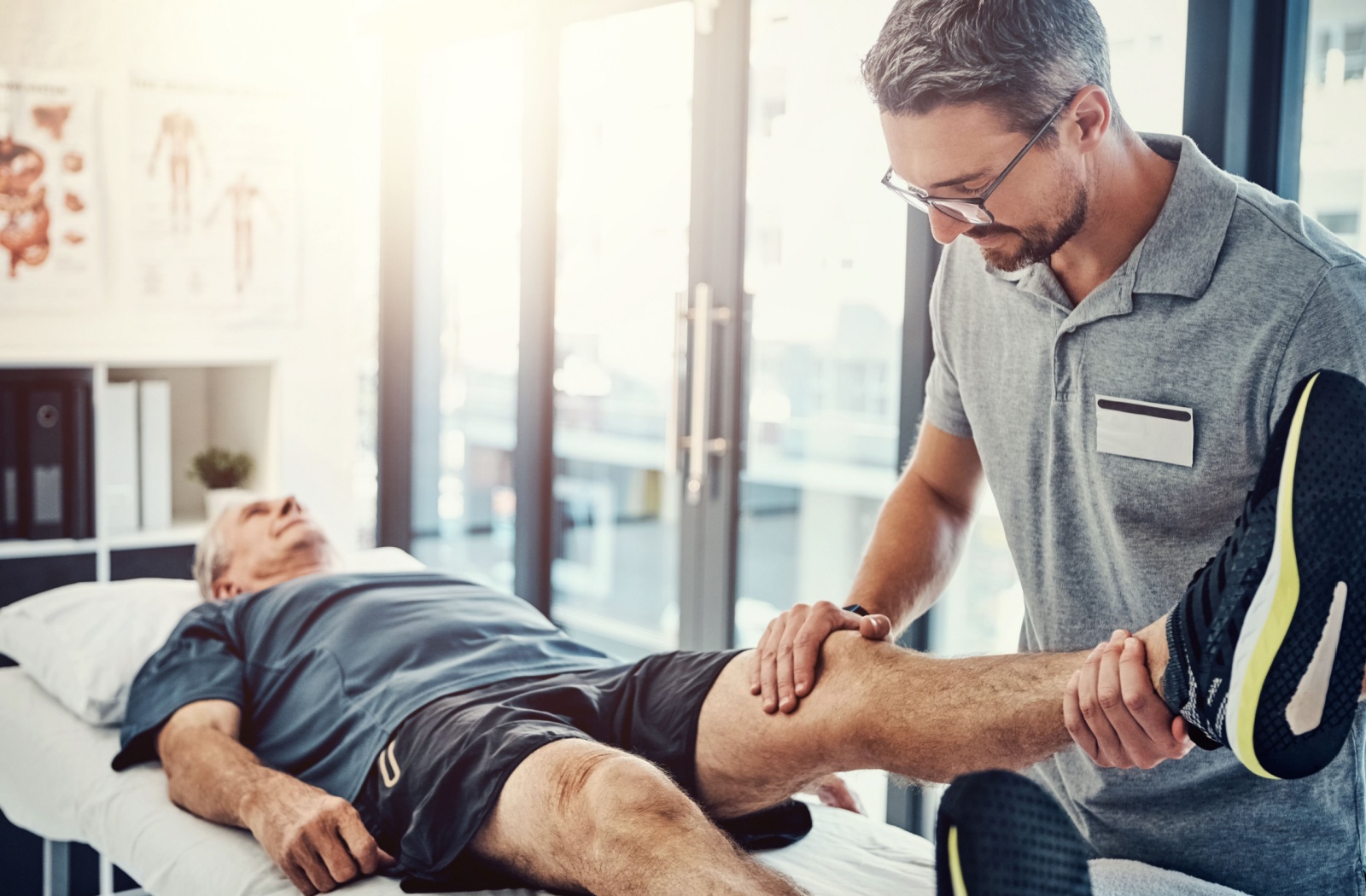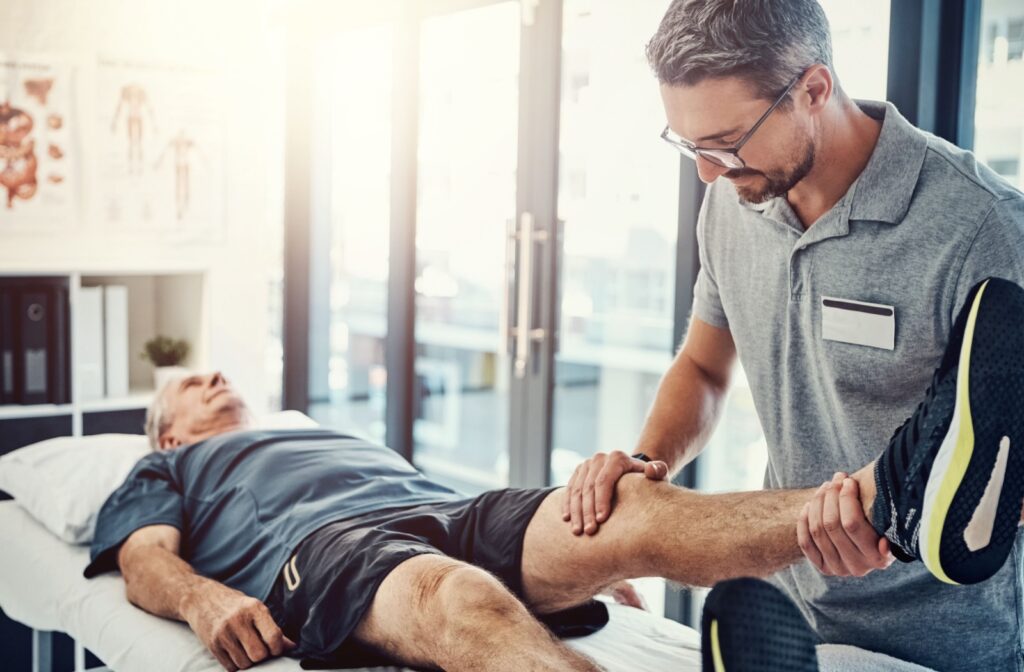Starting physiotherapy can feel overwhelming, especially when you’re unsure what to expect or what to wear. While there isn’t a one-size-fits-all answer to what you should wear for a physiotherapy appointment—as it ultimately depends on why you’re seeing the physiotherapist—it is best to wear something breathable and flexible.
Your clothing choice directly affects your physiotherapist’s ability to observe your movement patterns, access treatment areas, and perform hands-on techniques. When you dress appropriately, you’re setting yourself up for a more comfortable and productive session.
Fabric & Material Choice for a Physiotherapy Appointment
The first thing you’ll want to consider is the fabric and material choice of your clothing.
Comfortable & Breathable Fabrics
The foundation of appropriate physiotherapy attire starts with selecting the right materials.
- Cotton allows air to circulate freely, preventing overheating during exercises and treatments.
- Bamboo fabric is another excellent choice, known for its moisture-wicking properties and natural antibacterial qualities.
- Performance fabrics designed for athletic wear also work exceptionally well. Look for fabrics with a four-way stretch capability.
- Moisture-wicking synthetic blends can be particularly beneficial if you tend to perspire during physical activity.
Fabrics to Avoid
Certain materials can hinder your physiotherapy experience and should be avoided when possible.
- Denim may be a durable material, but it typically restricts movement, making it difficult for your physiotherapist to assess joint mobility or perform manual techniques.
- Heavy fabrics, like wool or thick fleece, can cause overheating and limit your physiotherapist’s ability to observe your movement patterns clearly.
- Fabrics with rough textures or scratchy surfaces can cause discomfort when you’re lying on treatment tables or during manual therapy sessions.
Clothing Style Choices for Physiotherapy Appointments
You should consider the style of clothing in addition to material choice.
Loose-Fitting vs. Tight Clothing
Finding the right balance between loose and fitted clothing is essential for optimal physiotherapy care.
Loose-fitting garments allow your physiotherapist to observe your natural movement patterns without restriction. But excessively baggy clothing can obscure your physiotherapist’s view of your posture and movement mechanics.
Moderately fitted clothing often provides the best compromise. These garments should allow a full range of motion while still enabling your physiotherapist to see how your body moves and functions.
Think of the fit you’d prefer for a yoga class: snug enough to stay in place during movement but loose enough to allow unrestricted motion.

Layering for Comfort
Layering your clothing provides flexibility throughout your appointment. Physiotherapy clinics can vary in temperature, and your comfort level may fluctuate as you transition between different activities.
You could start with a breathable base layer and add a light cardigan or zip-up hoodie that you can easily remove if needed. This approach also allows you to adjust your clothing based on the specific treatments you’ll receive.
If you get cold easily, it may be wise to bring an extra layer in case the clinic is cooler than expected or if you need additional warmth during rest periods between exercises.
Avoiding Restrictive Clothing
Garments with tight waistbands, restrictive sleeves, or limiting necklines can interfere with your natural movement patterns, making it difficult for your physiotherapist to perform necessary assessments.
Avoid clothing with belts, heavy buckles, or bulky hardware that can dig into your skin when you’re positioned on treatment tables. These elements can also interfere with certain treatment techniques or exercise equipment.
Footwear Choices for a Physiotherapy Appointment
Footwear is an often overlooked consideration when deciding what to wear to your physiotherapy appointment.
Supportive Shoes
Supportive athletic shoes are typically the best option for most appointments. These shoes provide stability during standing exercises and walking assessments while offering easy removal when needed for foot and ankle treatments.
Look for shoes with good arch support and cushioning that accommodate your foot type. If you have custom orthotics, bring shoes that accommodate them appropriately. Your physiotherapist may want to assess how your orthotics interact with your movement patterns or make adjustments to optimize their effectiveness.
Avoid shoes with complicated lacing systems or high boots that are difficult to remove quickly. Your physiotherapist may need to assess your feet, ankles, or lower legs, so choose footwear that comes off easily.
Socks vs. Bare Feet
The choice between wearing socks and going barefoot depends on your specific treatment needs and personal comfort preferences.
Clean, non-slip socks are often ideal for physiotherapy appointments. They provide a hygienic barrier while allowing your physiotherapist to assess foot position and movement patterns when shoes are removed.
Look for socks with grip dots or non-slip soles if you’ll be doing standing exercises or walking on smooth clinic floors. These specialized socks provide traction while maintaining the flexibility your physiotherapist needs to observe your foot mechanics. Avoid socks that are too thick or cushioned, as these can interfere with balance and proprioception exercises.
Some treatments may require bare feet, particularly if you’re receiving manual therapy for foot or ankle conditions. Your physiotherapist will guide you on what’s most appropriate for your specific situation.
Discuss Your Specific Situation with Us
Your comfort and preparedness can significantly impact the success of your physiotherapy sessions. By selecting the proper clothing and openly communicating with your physiotherapist, you can create an environment that fosters healing and progress.
If you’re looking for expert care tailored to your unique needs, Running Shoe Restorative Healthcare is here to help. Our compassionate team is dedicated to supporting you every step of the way on your recovery journey. Contact us today to schedule an appointment and take the first step toward restoring your health and mobility.





